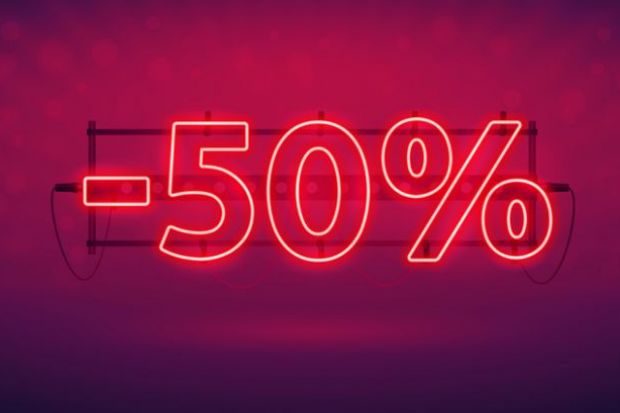US colleges and universities now give back to their students more in tuition breaks than they charge them, as the practice of discounting keeps surging to record levels.
The average undergraduate tuition discount – as measured across 341 private, non-profit US colleges and universities in the current academic year – has reached 50.9 per cent, according to the survey by the National Association of College and University Business Officers (Nacubo).
That’s up from 49 per cent last year, which also was a record high, punctuating a decade of nearly unbroken increases, Nacubo said.
The practice – in which institutions set nominally high prices for tuition then offer discounts to individual students for any number of reasons – has grown amid decades of rising income inequality in the US, where 10 per cent of households own more than 70 per cent of all the nation’s wealth.
In part, said Ken Redd, Nacubo’s senior director of research and policy analysis, tuition discounting is a strategy that helps make college affordable for families on the lower ends of that wealth divide.
Yet the ever-rising phenomenon of discounting also “reflects the financial strain many schools are facing – especially small, tuition-dependent private colleges” as they struggle to maintain their enrolment levels, Mr Redd said.
With the discounting, the average overall tuition and fee revenue realised by US colleges and universities declined this academic year by 5.4 per cent per first-time undergraduate, and by 5.9 per cent among all undergraduates, after accounting for inflation, Nacubo said.
Institutions at locations around the US have been confronting slowing growth or actual declines in the traditional college-age population, combined in recent years with the social and economic disruptions of the Covid pandemic. Total enrolment at US colleges and universities this academic year is nearly 6 per cent below 2019 levels, according to the National Student Clearinghouse Research Centre.
The discounting practice is even greater among the newer students that the institutions are first competing to attract, Nacubo said. The 341 institutions participating in the Nacubo survey reported an average institutional tuition discount rate of 56.2 per cent for their first-time, full-time, first-year students in the current academic year, up from 50.9 per cent in the previous year.
And almost all students get some amount of perceived discount. Among the first-time undergraduates, 90.9 per cent received institutional grant aid, covering an average of 62.1 per cent of published tuition and fees – also a record level. Among all undergraduates, 82.9 per cent received the aid, covering 57.6 per cent of the published price, Nacubo said.
Private US colleges and universities have been attributing their tuition discounting to a variety of sources, the business officers association said, mostly from what the institutions call undedicated sources of revenue, including unbudgeted general funds, unplanned contributions and forgone revenue.
More selective institutions are generally less likely to offer tuition discounts, Nacubo’s data showed. Those campuses that offered admission to fewer than 51 per cent of their applicants offered a median discount of nearly 47 per cent to this year’s first-time undergraduates, nearly 12 percentage points below the overall level in US higher education, Nacubo said.
请先注册再继续
为何要注册?
- 注册是免费的,而且十分便捷
- 注册成功后,您每月可免费阅读3篇文章
- 订阅我们的邮件
已经注册或者是已订阅?

